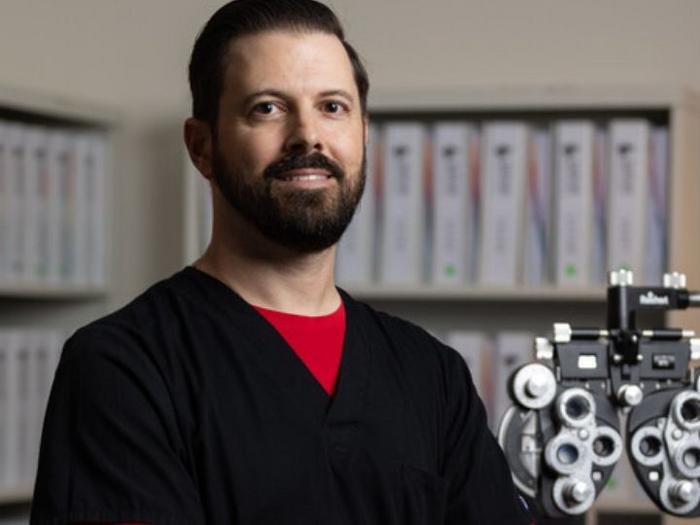
In an era where the prevalence of myopia, commonly known as nearsightedness, is rapidly increasing, researchers from the University of Houston are making strides in understanding how multifocal contact lenses can serve as an intervention method. This study, spearheaded by David Berntsen, a noted figure in optometry and chair of Clinical Sciences at the institution, highlights crucial findings regarding the lasting benefits of multifocal contact lenses in slowing the progression of myopia among children.
Nearsightedness is not simply a matter of inconvenience; it carries significant implications for eye health that can lead to severe conditions like retinal detachment and glaucoma in later life. The acceleration of myopia’s prevalence paints a concerning future—forecasting that by the year 2050, nearly half of the global population will be affected. This statistic underscores the urgent need to adopt effective treatments for myopia in its early stages, particularly during childhood, when the eyes are still developing.
The original BLINK study laid the groundwork for this research by enrolling 294 myopic children between the ages of 7 and 11. Participants were randomly assigned to wear either high-add power multifocal contact lenses or single-vision lenses for a three-year duration. The outcome illustrated a marked reduction in eye growth and myopia progression among those fitted with the multifocal lenses, revealing that such interventions during formative years can yield significant health benefits.
Following up on these findings, the ongoing BLINK2 study further investigated the long-term effects of ceasing multifocal lens wear. As these children transitioned to older adolescence, researchers aimed to see if the progress made was sustained. Remarkably, one year post-treatment, the study revealed no evidence of accelerated eye growth, indicating that the benefits experienced from these lenses endured even after use had stopped, thus challenging previously held assumptions about treatment cessation.
The persistence of treatment effects post-discontinuation is pivotal, as it suggests that multifocal contact lenses provide a durable solution to managing myopia. Berntsen reported that even as older teenagers ceased wearing these corrective lenses, their eyes returned to growth rates typical for their age, rather than showing the anticipated uptick in myopia progression. This finding is heartening, especially for parents and optometrists who may have been wary of potential rebound effects following the end of multifocal treatment.
Furthermore, the study indicates a recommendation for earlier intervention in children, suggesting that fitment with multifocal lenses at a younger age can provide lasting control over the myopic trajectory. Notably, researchers compared the effects of multifocal lenses with other methodologies, such as atropine drops, which have been associated with a rebound effect once treatment is interrupted. The distinction in outcomes reinforces the need for optometrists to consider multifocal options as a primary treatment pathway for myopia control.
The methodology behind multifocal lenses plays a crucial role in their success in slowing eye growth. Engineered to focus light differently than traditional lenses, these contact lenses create a unique visual profile that refracts light onto the retina while simultaneously manipulating light in the peripheral vision. This bulls-eye design not only addresses existing nearsightedness but also helps inhibit further elongation of the eye, central to the pathology of myopia.
Optometrists and researchers alike are optimistic about the implications of these studies. The potential for multifocal contacts to serve as a lasting intervention aligns well with evolving practices in pediatric eye care, providing an avenue for mitigating long-term ocular health risks. The interdisciplinary collaboration that fueled this research, with input from institutions like Ohio State University, is testament to the collective effort needed to tackle this global health crisis.
Moreover, the findings of these studies play an integral part in shaping future clinical guidelines and standards in optometry. As practitioners prioritize early and effective treatment strategies, the knowledge gained from the BLINK studies will undoubtedly inform how they approach myopia management in clinical settings.
Education and awareness regarding myopia’s risks and the potential benefits of multifocal lenses must be disseminated widely. As the world braces for an impending myopia epidemic, efforts to integrate such research findings into public health messaging and school health programs become increasingly essential. The earlier that children can be fitted with appropriate corrective lenses, the greater the chance of reducing the rates of severe myopia and its associated risks, such as vision impairment.
In summary, as Berntsen and his team refine their approach to myopia treatment, their dedication exemplifies a broader commitment in the optometric community to understanding and addressing the challenges posed by this vision disorder. The BLINK studies present not only groundbreaking evidence but also serve as a beacon of hope for enhancing the ocular health and overall quality of life for future generations.
Subject of Research: Myopia control through multifocal contact lenses
Article Title: Axial Growth and Myopia Progression After Discontinuing Soft Multifocal Contact Lens Wear
News Publication Date: 16-Jan-2025
Web References: JAMA Ophthalmology
References: NIH grants UG1 EY023204, EY023206, EY023208, EY023210, P30 EY007551, UL1 TR002733
Image Credits: University of Houston
Keywords: Myopia, Multifocal contact lenses, Eye health, Pediatric optometry, Vision disorders





